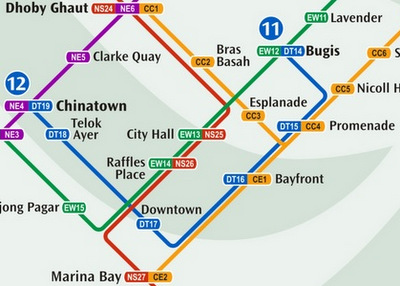|
|
Enhanced capital efficiency from asset disposal
Under the new GCM, the government will own all bus assets and related infrastructure, allowing CDG to unlock c.12% of its equity capital from the low-return Singapore bus business. In FY13, CDG’s Singapore public bus segment registered the lowest ROE of the group at 3.4%, vs. an average of 14.1% for CDG’s other businesses.
 SBS Transit is expected to divest S$1.2 billion of assets in 2016 to the government. NextInsight file photoWe expect S$1.2bn worth of asset sales by SBS Transit (75%-owned subsidiary) in 2016, to bulk CDG’s net cash up to S$642m (move adds S$236m or 11cts per share after retiring all related liabilities).
SBS Transit is expected to divest S$1.2 billion of assets in 2016 to the government. NextInsight file photoWe expect S$1.2bn worth of asset sales by SBS Transit (75%-owned subsidiary) in 2016, to bulk CDG’s net cash up to S$642m (move adds S$236m or 11cts per share after retiring all related liabilities). CDG could deploy the freed capital to pursue a proven, successful overseas growth strategy or reward its investors with a special dividend. Either way, ROE will head up to justify higher valuations.
Positives of low energy cost
Even without a contracted margin from the GCM (est. 8-10% OP margin effective Sep-16), CDG will enjoy earnings tailwinds from lower energy prices (FY15 net profit: +S$24m; FY16: +S$41m), even without factoring fare hikes. Post-GCM, energy costs will be a cost pass-through, negating any concerns of an eventual bounce in oil prices. The benefits are mostly from Singapore rail and bus (55% of energy consumption) as other bus operations are already energy-indexed.
Brent oil prices have halved to US$45-55 per barrel and Singapore’s electricity price has also declined by 35% to S$90/ MWh from 2014’s average. Our estimates already reflect the subdued positive as CDG has hedged 70%/15% of its FY15/FY16 energy consumption.
 With just six stations, the SBS Transit-operated Downtown Line (in blue) has been loss-making owing to a lack of scale.DTL out of the dark soon
With just six stations, the SBS Transit-operated Downtown Line (in blue) has been loss-making owing to a lack of scale.DTL out of the dark soon Since the DTL commenced stage I operations (Dec-2013), a lack of scale means the DTL is loss-making.
We expect DTL breakeven to materialise between the commencement of stage II (1Q16) and stage III (2017) as a wider network effect will bring up total DTL ridership exponentially.
We believe that a new train contracting model has less benefits for CDG.
Recent story: "COMFORTDELGRO to receive cash windfall for bus assets" -- StanChart







